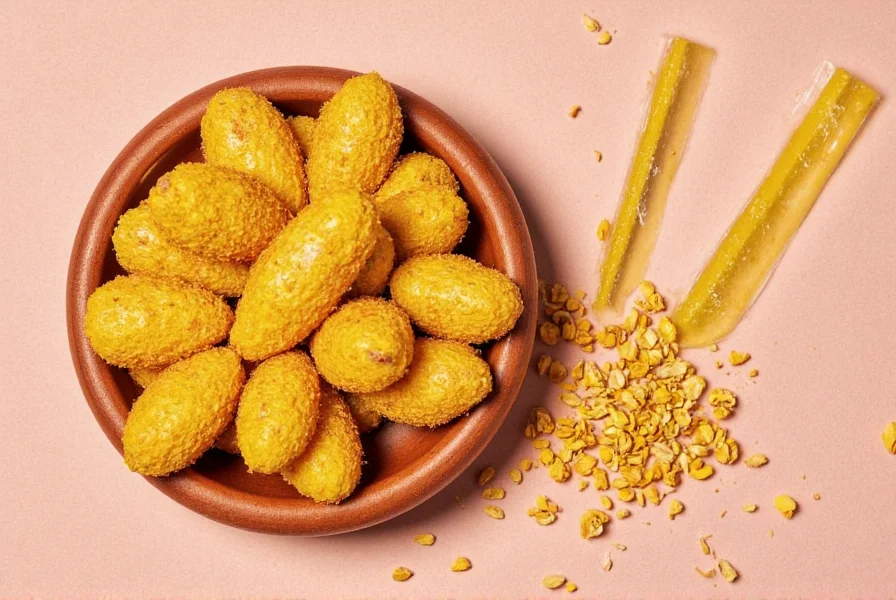Table of Contents
Introduction to Cassia
Cassia (Cinnamomum cassia), commonly known as Chinese cinnamon, is a spice derived from the inner bark of trees in the Cinnamomum genus. It is one of the most widely used cinnamon varieties globally, known for its robust, sweet, and slightly spicy flavor profile. Unlike true cinnamon (Ceylon cinnamon), cassia has a stronger taste and higher coumarin content, which is important for health considerations. According to the U.S. Food and Drug Administration (FDA), cassia is the predominant cinnamon type in commercial products worldwide due to its affordability and intense flavor.
Cassia vs. Cinnamon: Key Differences
| Feature | Cassia | True Cinnamon (Ceylon) |
|---|---|---|
| Origin | China, Indonesia | Sri Lanka |
| Flavor | Stronger, spicier, sweeter | Milder, more delicate |
| Aroma | Rich and pungent | Fragrant and subtle |
| Appearance | Thicker, darker, rougher texture | Thin, light brown, smooth |
| Coumarin Content | High (0.4-1.2% in bark) | Very low (0.004-0.01%) |
While both can be used interchangeably in many recipes, research from the National Institutes of Health (NIH) confirms cassia's higher coumarin levels require caution for regular high-dose consumption. Its bold character makes it ideal for baking, savory dishes, and beverages where intense flavor is desired.
Cassia in Cooking: Practical Applications
Cassia is a versatile spice used across global cuisines. Its robust flavor profile enhances both sweet and savory applications:
- Baking: Perfect for cookies, cakes, and pies. Think cinnamon rolls, apple pie, or gingerbread. USDA recipes frequently feature cassia for its deep warmth.
- Spiced Drinks: Add a pinch to hot chocolate, coffee, or tea for a cozy twist. Traditional chai recipes often rely on cassia for its signature intensity.
- Savory Dishes: Great in meat rubs, stews, and curries. It pairs well with cloves, nutmeg, and allspice. Epicurious recommends cassia for Moroccan tagines and Mexican mole sauces.
- Glazes and Sauces: Used in glazes for meats, fruit sauces, and even marinades. Its high sugar content creates excellent caramelization.
Buying Guide: Selecting Authentic Cassia
Types of Cassia
- Chinese Cassia (Cinnamomum cassia): Most common and widely available. Strong flavor, thick bark. USDA research confirms it dominates global spice markets.
- Indonesian Cassia (Cinnamomum burmannii): Slightly milder but still robust. Often used in Southeast Asian cuisine. Preferred for its balanced sweetness in traditional dishes.
Key Features to Look For
- Color: Dark reddish-brown with a glossy finish (avoid pale or grayish tones indicating age).
- Texture: Thick, rough, and slightly woody. True cinnamon sticks are thin and fragile.
- Aroma: Strong, sweet, and slightly spicy. Crush a small piece to test freshness.
- Source: Prefer organic and ethically sourced options. Check for Fair Trade certification to support sustainable farming.
Health and Safety Considerations
Cassia contains higher levels of coumarin than Ceylon cinnamon. According to the European Food Safety Authority (EFSA), coumarin may cause liver damage in sensitive individuals when consumed in large quantities. The recommended daily limit is 0.1 mg per kg of body weight. For most people, normal culinary use (1-2 teaspoons daily) is safe, but those with liver conditions should consult a healthcare provider. NIH studies suggest cassia may support blood sugar regulation, but more research is needed for therapeutic claims.
Frequently Asked Questions
What is cassia?
Cassia (Cinnamomum cassia), commonly known as Chinese cinnamon, is a spice derived from the inner bark of trees in the Cinnamomum genus. It is the most widely used cinnamon variety globally, with a robust, sweet, and slightly spicy flavor profile. Unlike true cinnamon (Ceylon cinnamon), cassia has higher coumarin content and is more affordable, making it dominant in commercial products.
Is cassia the same as cinnamon?
No. "Cinnamon" in most stores refers to cassia, but true cinnamon is specifically Ceylon cinnamon (Cinnamomum verum). Cassia comes from China/Indonesia with thick, rough bark and strong flavor. Ceylon cinnamon comes from Sri Lanka with thin, smooth bark and delicate taste. The FDA notes cassia contains 100-200x more coumarin than Ceylon cinnamon.
Is cassia safe to consume regularly?
Yes for normal culinary use (1-2 teaspoons daily), but caution is needed for high-dose consumption. The EFSA recommends a maximum daily intake of 0.1 mg coumarin per kg of body weight. For a 70kg adult, this equals about 7mg daily. Most cassia sticks contain 1-2mg coumarin per gram, so 3-5 grams daily is the safe limit. Those with liver conditions should consult a doctor.
What are the health benefits of cassia?
Research from the NIH suggests cassia may help regulate blood sugar and reduce inflammation due to its polyphenol content. However, these effects are not as pronounced as in Ceylon cinnamon, and cassia should not replace medical treatment. Always consult healthcare professionals for health concerns.
How should I store cassia to keep it fresh?
Store whole cassia sticks in an airtight container away from light, heat, and moisture. Whole sticks retain flavor for 3-4 years, while ground cassia lasts 6-12 months. The USDA recommends storing in a cool, dark cupboard (not near stoves) to prevent flavor degradation.
Can I substitute cassia for cinnamon in recipes?
Yes, but adjust quantities due to cassia's stronger flavor. For most recipes, use 20-25% less cassia than called for cinnamon. In delicate dishes like custards or light desserts, Ceylon cinnamon is preferable. For hearty recipes like stews or gingerbread, cassia works perfectly. Always check the Epicurious substitution guide for specific dishes.
Conclusion
Cassia (Chinese cinnamon) is a globally dominant spice known for its robust flavor and affordability. While it differs significantly from true cinnamon (Ceylon) in coumarin content and taste profile, it remains a staple in kitchens worldwide. For safe and effective use, follow FDA and EFSA guidelines on coumarin intake, and prioritize whole sticks for maximum freshness. Whether baking, cooking, or brewing, cassia delivers exceptional depth when used appropriately.











 浙公网安备
33010002000092号
浙公网安备
33010002000092号 浙B2-20120091-4
浙B2-20120091-4